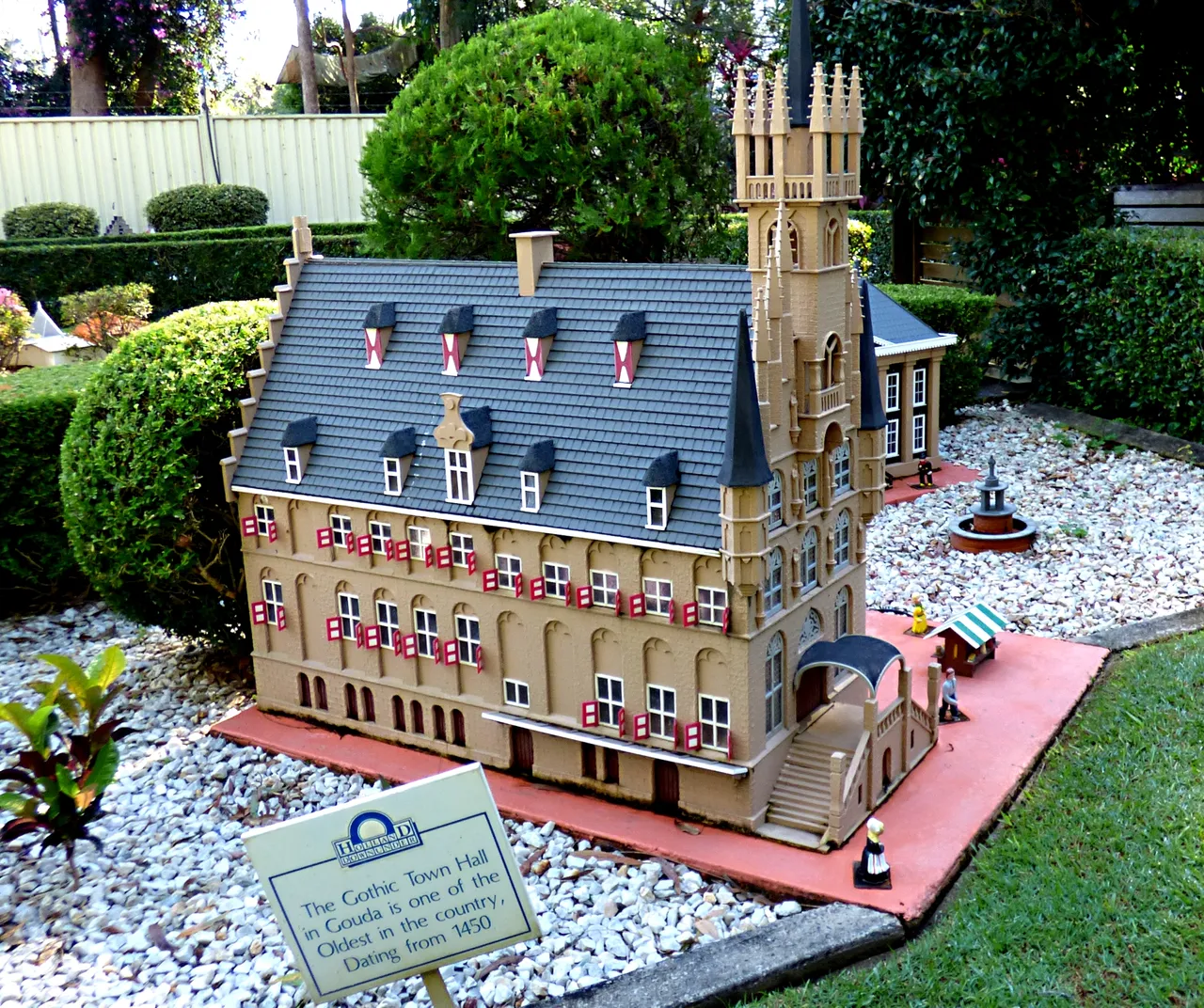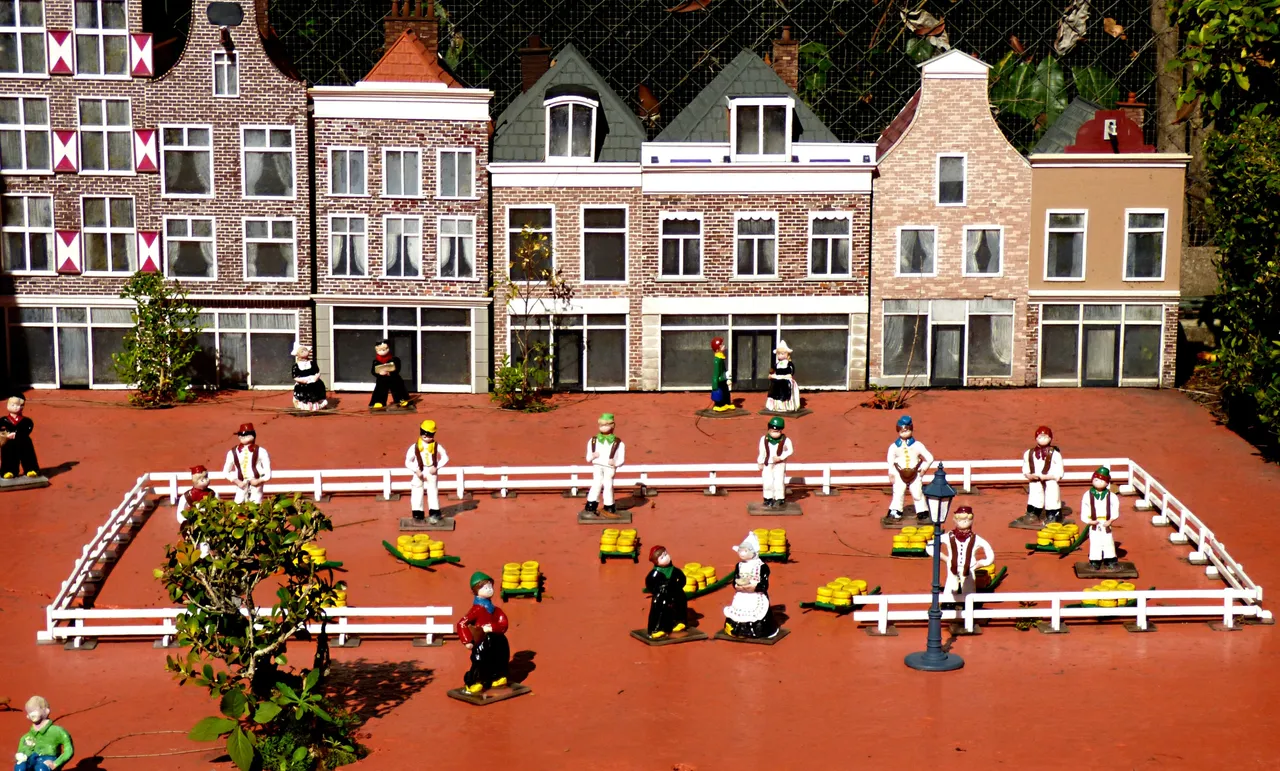MY TRIP TO HOLLAND
I've always wanted to go to Holland. So much of this beautiful country fascinates me. Therefore, I was delighted to wander the streets, admire the canals, the magnificent buildings and castles, absorb geological and historical facts and allow myself to become entranced by all things, 'Dutch' during my visit.

And.........I was able to accomplish all of this without leaving the shores of Australia. How? I did this by taking a tour around the amazing Clog Barn located in Coffs Harbour in New South Wales. Big Oma's Coffee house was open for business and the aromas coming from there were very tantalizing. The Model Dutch Village was situated at the rear of the Clog Barn but I arrived just in time to watch the Clog making demonstration and as I didn't want to miss out on this, I put my pancake treat aside until I after this event.

Check out these beautifully engraved clogs. These well recognized symbols of Holland are not worn very much nowadays by the average person but they are still a reasonably common choice for farmers and gardeners working in rural areas. They gained momentum in the 16th century as a form of footwear in the Netherlands and were crafted out of a single piece of wood. Due to their water resistant qualities people were able to manoeuvre through wet fields as they went about their work. The solidity of the clogs protects wearers against possible injury.

The art of clog making has adapted considerably over the years and when I watched the demonstration I realized that it was no easy fete making them by hand. Curved, long handled tools gauge sections from the wood and a lot of plaining takes place to produce a smooth finish but the wood has to be newly hewn (when it is slightly damp) which makes it more pliable to work with. Modern machinery has replaced the back breaking work of handmade clogs.
The delightful sound of cuckoo clocks drew my attention at the end of the demo and I moved closer to study the intricate workmanship of these beautiful clocks displayed on the walls.

All around the Barn, clogs appeared in a variety of colours and sizes and were available as brush holders, money boxes, key rings, and fridge magnets etc. With only about 30 Dutch wooden clog makers remaining, souvenirs like these serve to keep these traditional icons alive.

Allow me to take you for a stroll around the Model Dutch Village outside with its turning windmills and working railway meandering around the entire area.

The plan to build a little piece of Holland in the heart of Coffs Harbour began with a dream by Dutch born Tom Hartsuker. There is nothing else like it Australia and after you have seen the miniature houses, castles and buildings I'm sure you will be very impressed (as I was) with the amount of thought and detail which has gone into building this model village.
A wedding was taking place at the historic Church of Oldenhove in the Province of Gronngen.

Here is a typical farm dwelling with the canal flowing on its borders.

This is Haarlem.......The Ten Boom Jewellery Shop and upstairs home. It was a sanctuary for the Jewish and Dutch underground workers hiding from the Nazis during WW2. Up to 6 people at a time could be secretly housed in Corrie Ten Boom's bedroom in a hole in the wall. During 1943 and 1944 an estimated 800 Jewish lives were saved by the Ten Boom family.

De Waag Amsterdam. By the way, these model buildings are surrounded by real trees and real grass giving the village a very authentic look. Due to the fact that we were understandably not allowed to step over the hedges, most of the photos are taken looking down on the buildings which isn't the best for viewing but I hope you can get enjoyment from seeing the images and can appreciate the scale of the buildings etc.

The Medieval Village of Thorn. Every model at the Clog barn was hand made by owner Tom Hartsuyker with the help of John Hartsuyker. It has taken them 35 years to complete, but at 85 years of age Tom is still making models today.

This incredible building is The Gothic Town Hall in Gouda which is one of the oldest in the country dating back to 1450.

And here is the Alkmaar Cheese Market where trading first began in 1365 with a single set of scales. The growth of this industry saw four sets of scales introduced in 1612. 1593 is considered to be the first year of the cheese market which is traditionally held on the Waagplein (The City Square.) This particular Square has been extended eight times prior to its current dimensions which is indicative of the importance of the cheese trade in this city.

Arnhem......The Stadius, popularly known as Dulvelshis (Devil House) Arnhem is renowned for the WW2 conflict between British parachutists and German soldiers when 7000 British men were killed.

The Mauritshuis Museum which was built in January 1822. Hague.

The Lighthouse in Marken, was built in 1839 and is still being used today. Naturally the surroundings here differ considerably to the location of the real Lighthouse in Marken as it is surrounded by the sea and is situated on the tiny island of Marken. Circling the entire island covers an area of approximately 9 kilometres.

This is the House of the Wine Merchants.

The Diamond Wholesale, Tax Free building.

The Muiderslot Castle whose foundations were built in 1280.

The Friesland farmhouse which dates back to the 17th Century.

A quaint water driven sawmill.

I hope you have enjoyed Part One of "My Trip to Holland," and hope you can join me in a few days time when it will be my pleasure to show you more of the amazing sites at The Clog Barn.
Information Sources: clogbarn.com.au
discoverholland.com
smithsonianmag.com
holland.com
THANK YOU FOR VIEWING. HAVE A GREAT DAY.












































